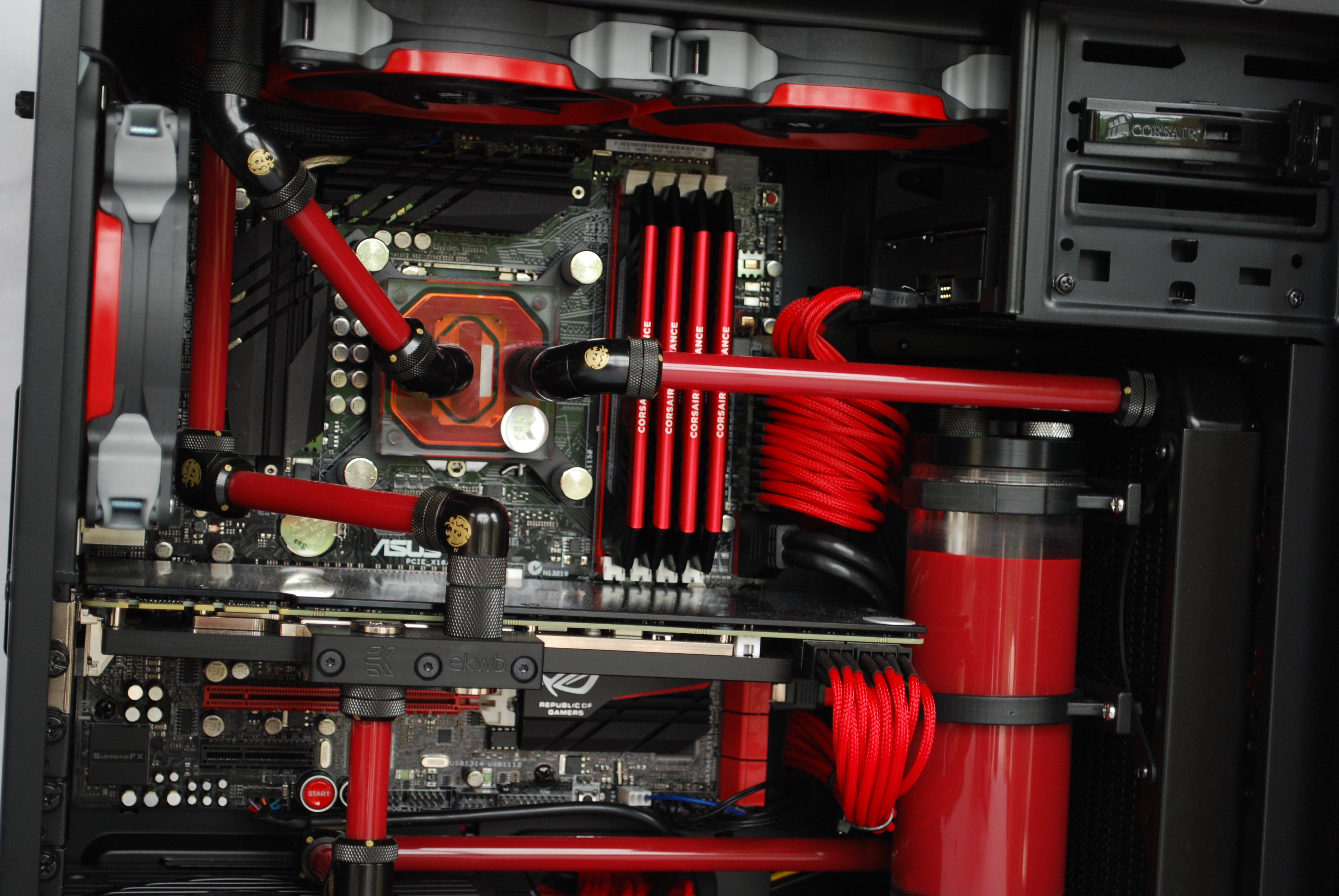Hi guys, I'm thinking of adding an acrylic (hard) tubing water cooling loop to my current build. It'll be my first time doing a custom water cooling loop, so I need a little bit of advice. I'm stuck as to how I would connect all of it and alight the tubing/fittings without bending the tubing, as I'm not quite ready for that yet. Would I just have to use a bunch of 90 degree fittings?
 How did this guy manage to connect his CPU to his top radiator and get the fittings to align perfectly without using 90 degree joints? My main questions is how people manage to get tubing and fittings to align perfectly without using a bunch of joints.
How did this guy manage to connect his CPU to his top radiator and get the fittings to align perfectly without using 90 degree joints? My main questions is how people manage to get tubing and fittings to align perfectly without using a bunch of joints.
*Edit* I might try bending the tubing if it'll save me from having to buy a bunch of 90 degree joints to align the tubing. However, I don't have a heat gun and I don't want to spend more money buying one. Would a gas grill or hairdryer work as an alternative?
Thanks in advance for your answers.

*Edit* I might try bending the tubing if it'll save me from having to buy a bunch of 90 degree joints to align the tubing. However, I don't have a heat gun and I don't want to spend more money buying one. Would a gas grill or hairdryer work as an alternative?
Thanks in advance for your answers.

